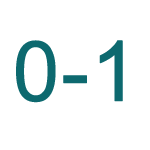 Binary Number Converter
Binary Number Converter
Binary numbers are used in computer systems to represent data using only two digits: 0 and 1. However, sometimes it's necessary to convert these binary numbers into other number systems, such as base10 (decimal), octal, or hexadecimal.
Converting binary to base10 involves the process of multiplying each digit in the binary number by its corresponding power of 2 and adding the results together. For example, to convert the binary number 1010 to decimal, you would perform the following calculation:
1 x 2^3 + 0 x 2^2 + 1 x 2^1 + 0 x 2^0 = 8 + 0 + 2 + 0 = 10
To convert binary to octal, the binary number is divided into groups of three digits, starting from the rightmost digit, and each group is then converted to its corresponding octal value. For example, the binary number 1010110 can be divided into 010, 101, and 100, which can be converted to 2, 5, and 4 in octal, respectively. The final octal value would be 254.
Converting binary to hexadecimal follows a similar process to binary to octal conversion. The binary number is divided into groups of four digits, starting from the rightmost digit, and each group is then converted to its corresponding hexadecimal value. For example, the binary number 1010110 can be divided into 0101 and 1100, which can be converted to 5 and C in hexadecimal, respectively. The final hexadecimal value would be 5C.

